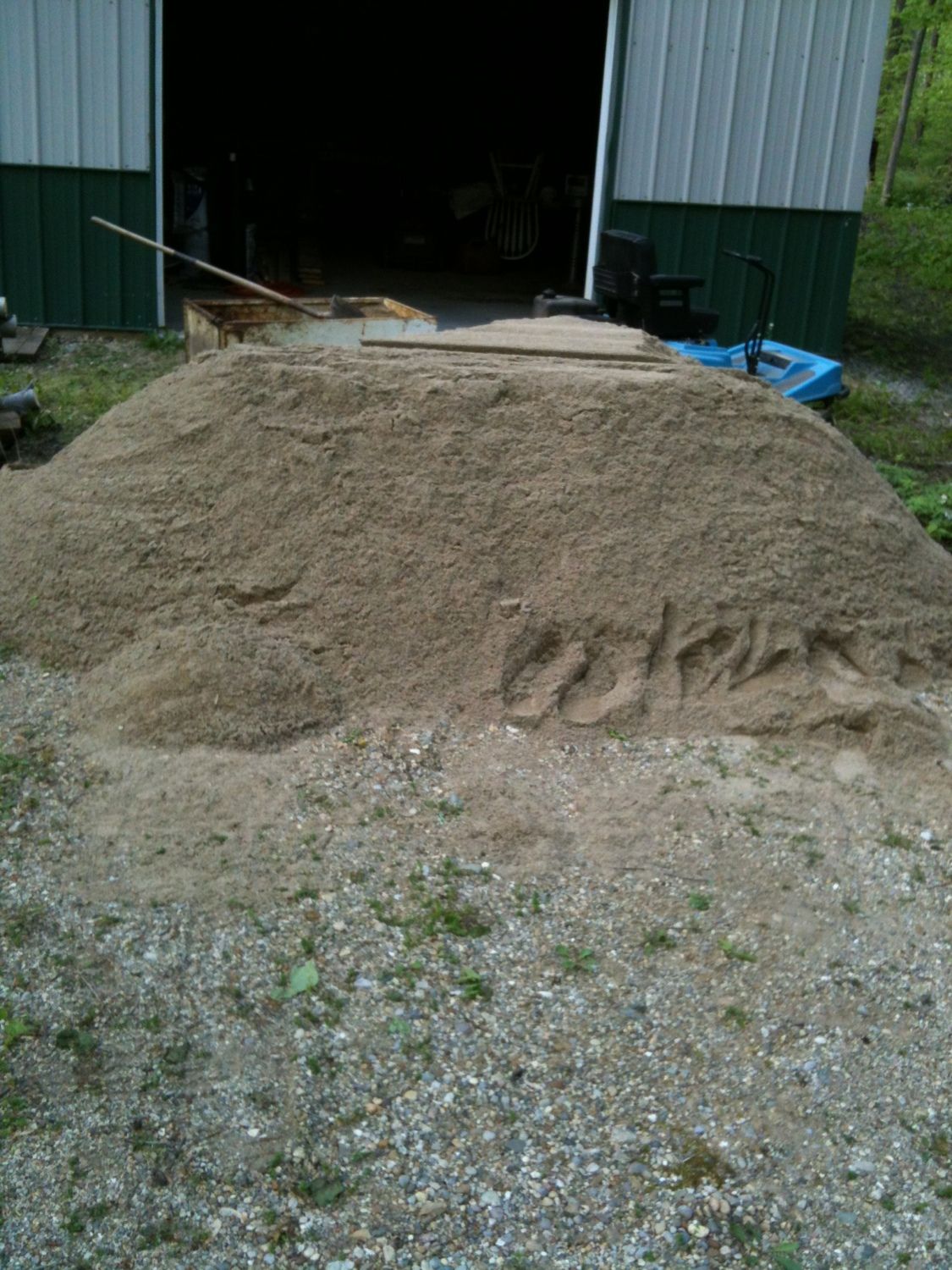- Thread starter
- #81
- Dec 16, 2011
- 883
- 358
- 306
April 27
Before I cover the front of the run with wire fabric I want to fill the run floor with sand. That would be easier then trying to carry the sand thru the 24" people door.
20' length x 6' width x .7' average depth = 84 cubit feet / 27 = 3.1 cubic yards.
Local Gravel Pit tells me about 1 1/2 yards = 1 ton. So I needed about 2 tons to fill the bottom of the run.
Washed sand is 7.25 per ton. Delivery charge is $35.
Cost $35 to deliver $14.50 worth of sand....hmmmm....if I double my order to 4 tons then I'm sure to have enough sand and I can do a paving brick type sidewalk to the coop too! Done! They will deliver this afternoon.
So for $64 I get 4 tons of sand and many many enjoyable trips with a wheel barrel hauling sand back and forth, back and forth, back and forth...
Word of advice. Don't have sand delivered after a rain. You will be paying for more water then sand! Wait until several days of nice dry weather to before your have your sand delivered.
Local Lumber Yard sells bagged play sand for $3.53 in 50 pound bags. That would be 160 bags and $564.80 for 4 tons. Ouch!
Before I cover the front of the run with wire fabric I want to fill the run floor with sand. That would be easier then trying to carry the sand thru the 24" people door.
20' length x 6' width x .7' average depth = 84 cubit feet / 27 = 3.1 cubic yards.
Local Gravel Pit tells me about 1 1/2 yards = 1 ton. So I needed about 2 tons to fill the bottom of the run.
Washed sand is 7.25 per ton. Delivery charge is $35.
Cost $35 to deliver $14.50 worth of sand....hmmmm....if I double my order to 4 tons then I'm sure to have enough sand and I can do a paving brick type sidewalk to the coop too! Done! They will deliver this afternoon.
So for $64 I get 4 tons of sand and many many enjoyable trips with a wheel barrel hauling sand back and forth, back and forth, back and forth...
Word of advice. Don't have sand delivered after a rain. You will be paying for more water then sand! Wait until several days of nice dry weather to before your have your sand delivered.
Local Lumber Yard sells bagged play sand for $3.53 in 50 pound bags. That would be 160 bags and $564.80 for 4 tons. Ouch!
Last edited:







